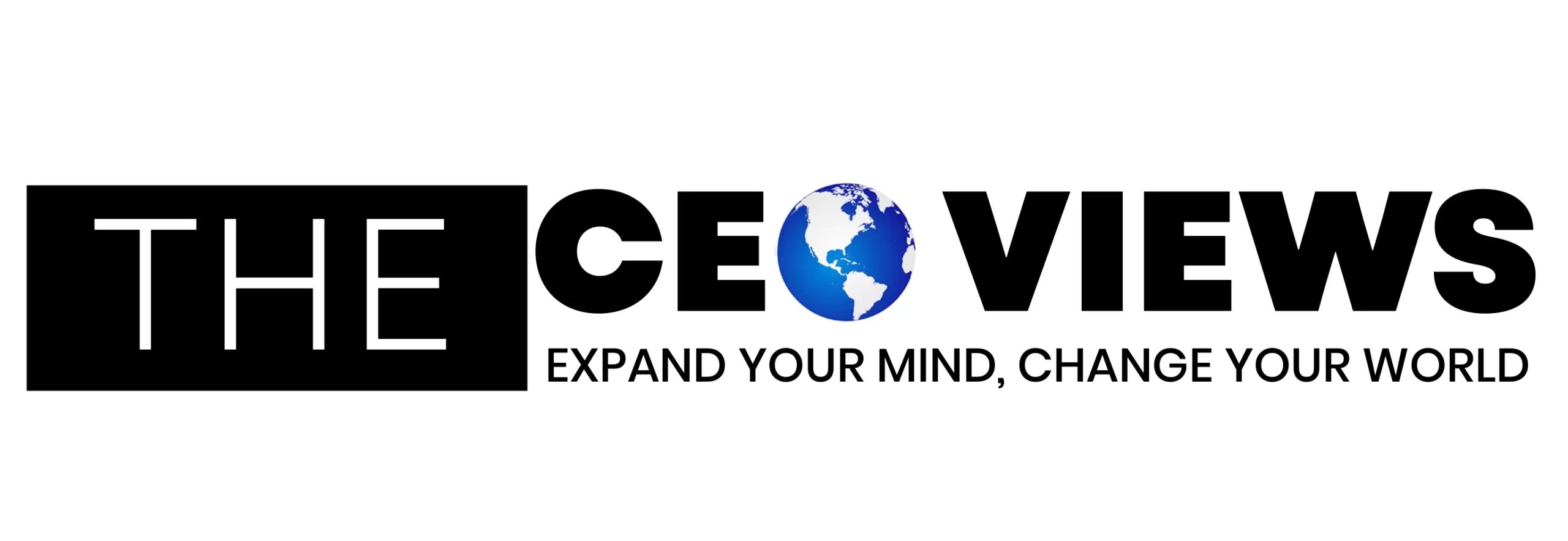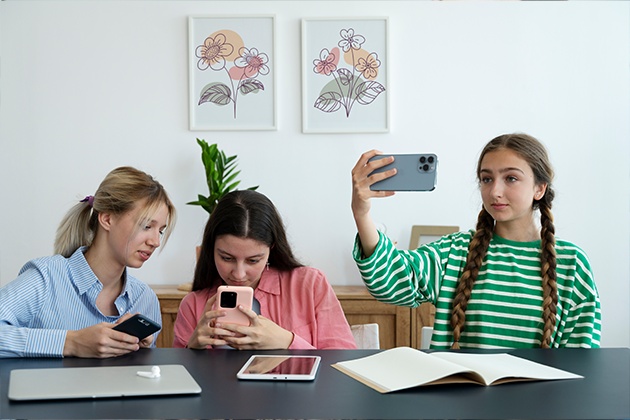Technology acts as a steady partner for many learners. From morning alerts on phones to late reviews on small tablets, devices weave through daily study time. People still wonder about digital storytelling and its place within class life. It blends pictures, voice, and plain text into short media pieces that make lessons vivid. When deadlines press, some students seek support and think, I need help, who can write my paper while I finish a media project? Such choices show how quickly students switch among tools to complete tasks. In this constant mix of screens and software, smart choices matter. Learners need to select the right app, keep files organized, and share ideas clearly. The next sections explain how technology shapes class routines, lifts creativity, and signals where learning may head next.
A Tech-Filled Classroom, Day After Day
Step into a current classroom and bright displays glow beside well-used notebooks. Interactive panels stand where chalk once lived, letting teachers move and sketch ideas for all eyes. Cloud slides send lessons to every seat, so nobody struggles to copy lines. Headsets connect to language apps that speak hard words aloud, while science probes stream live numbers during labs. These tools narrow the space between lesson and action in practical ways. Instead of only reading about volcanoes, students watch slow eruptions, then build charts on the same device. By blending hands-on labs with real-time visuals, the room becomes a living workshop filled with graspable knowledge. The strongest gain is choice. Each learner can pause, replay, or zoom in on material that feels tough. As hardware prices fall and school networks grow stronger, even small districts add fresh gear without draining budgets. Technology no longer sits on the sidelines. It joins every subject, every day.
Linking and Teaming Beyond the Classroom
Group work once meant meeting in the library after classes. Now shared files let teams draft slides from bedrooms miles apart. A math crew swaps steps live, watching figures appear on one shared sheet. Video calls turn homework into friendly idea sessions, and chat apps keep quick help flowing long after dismissal. Teachers watch the draft process unfold and give nudges instead of waiting for a final upload. Global ties also form as classes link across borders with clear goals and kind talk. A civics group in Ohio discusses policy with peers in Kenya, learning culture and patience at once. These platforms teach more than facts. They build soft skills like clear writing, polite feedback, and time-zone planning. By lowering the barrier to speaking up, tech tools empower quiet voices that might stay silent in crowded rooms. Group work feels less like juggling schedules and more like sharing a digital café where ideas bounce freely.
Research Skills in a Time of Endless Sources
Search portals place huge libraries inside a pocket, yet floods of links can overwhelm. Learning to filter, verify, and cite now matters as much as reading itself. Browser add-ons warn about shaky pages, while school databases provide peer-reviewed work with one click. Teachers guide classes through sharp search moves using terms, date limits, and domain filters. Digital notebooks store links with short notes, which makes later review simple and fast. Citation makers cut down on errors, yet students still learn to check author bias and funding ties. Virtual tours of museums let learners study primary sources without plane tickets. By mixing classic detective habits with modern tools, students turn random surfing into a focused mission. The outcome is stronger critical thinking and deeper respect for credible evidence. These habits stretch past homework into daily life, where smart choices depend on trustworthy information.
Staying Organized in a Busy, Screen-Heavy Life
With due dates popping up across platforms, order can feel like herding digital cats. Calendar apps send friendly pings before quizzes, and task lists sort items by color and urgency. Cloud drives keep files safe even if a laptop slips from a backpack. Note apps record classes while syncing typed thoughts, giving students a chance to replay tough parts later. Reading software marks key lines and turns them into flashcards within seconds. By setting simple routines, like morning inbox checks and evening backups, learners squeeze chaos into shape. Parent portals add another layer of support, letting families spot trends without nagging. These habits build time-management skills early and ease the jump to college or work. When tools are used wisely, they clear mental space for creative leaps and focused study. The goal is not more apps, but calmer days and steady progress.
Creativity Through Digital Storytelling
A lesson can change when learners craft a multimedia tale instead of a plain essay. Digital storytelling offers a stage to combine voice, images, and music into one strong piece. Whether retelling a historic moment or explaining a science idea, students pick visuals that stir feeling, then write a tight script to guide viewers. This blend lifts dry facts into vivid scenes that classmates remember long after class. For teachers, the format doubles as a clear and fair check for understanding. A finished video can show mastery of content, careful pacing, and audience awareness. Because each story demands planning, scripting, and editing, learners practice literacy, tech skills, and artful choices at once. The method welcomes different strengths. Some excel at drawing, others at voice-over work, and still others at coding small interactive parts. The result is a classroom buzzing with fresh energy and peer inspiration.
Picking Tools and Platforms for Digital Stories
Many platforms support digital stories, and each brings distinct strengths for different tasks. Simple slide makers fit quick photo journals and short reports with neat captions. Animation apps let characters walk and speak on screen, which suits language practice and playful scenes. Video editors handle bigger jobs with layered tracks and green screen tricks for polished cuts. Interactive timelines allow history classes to embed maps and primary documents from trusted archives. Comic strip builders turn tales into bold panels that pull younger readers into the action. Audio-only podcast hubs focus on voice and soundscapes, perfect for students who love radio drama. Picking the right tool depends on the project goal, comfort level, and available devices. Many teachers run a small “tool fair,” where groups test options and share bright findings. By trying varied software, students see how form shapes story and learn simple project management.
Examples Students Can Follow
Real models can spark ideas faster than long guides with rigid steps. One strong piece shows a middle school student using stop motion to explain the water cycle, layering cotton clouds over blue clay seas. Another maps a family migration across generations using pins on an online globe with brief captions. A high school biology group produced a rap about cell parts, blending humor with accurate facts and clean labels. Younger classes built an audio tour of local sites, guiding listeners through history with a homemade podcast. These examples show that length or budget matters less than a clear narrative and sound design. By watching peers turn lessons into memorable media, newcomers gain confidence to try their own twist. Teachers compile these samples into online galleries that grow each term. A living library of student work becomes both study help and creative spark.
Digital Well-Being and the Strain of Constant Links
While tools open doors, they also bring hurdles like screen fatigue, distraction, and privacy risk. Students may peek at messages during study time, slicing focus into tiny shards that drain energy. Blue light can upset sleep if screens glow late into the night. Schools respond with digital well-being lessons that set app limits, schedule offline breaks, and teach social media manners. Privacy sessions show learners how to manage profiles, passwords, two-factor keys, and sharing rights. When group chats turn harsh, counselors explain respectful online talk and how to report bullying. Families add support at home with device-free meals and simple tech rules. The goal is not to reject gadgets but to use them with care. Healthy habits protect attention, support friendships, and keep personal data secure. Balance lets learning thrive without constant strain.
Looking Ahead: New Directions in Student Tech
The horizon promises even more helpful tools that support clear learning. Augmented reality glasses could project three-dimensional diagrams onto lab tables, letting students dissect virtual frogs without smells. Intelligent tutors may adjust math sets live based on a learner’s stress level and answer speed. Smart pens might record handwriting and switch it to editable text on the spot with reliable accuracy. As network speed grows, remote field trips will stream in sharp detail, making distant rainforests feel near. Yet one core skill stays central. Storytelling remains the bridge between ideas and people, no matter the screen. Whether through holograms or voice-activated displays, clear communication will still shape success. By practicing digital storytelling today, students prepare to shape messages on platforms not yet common. Schools that teach adaptability, ethics, and creativity alongside new gear will send graduates ready to learn, unlearn, and learn again as tools change.









